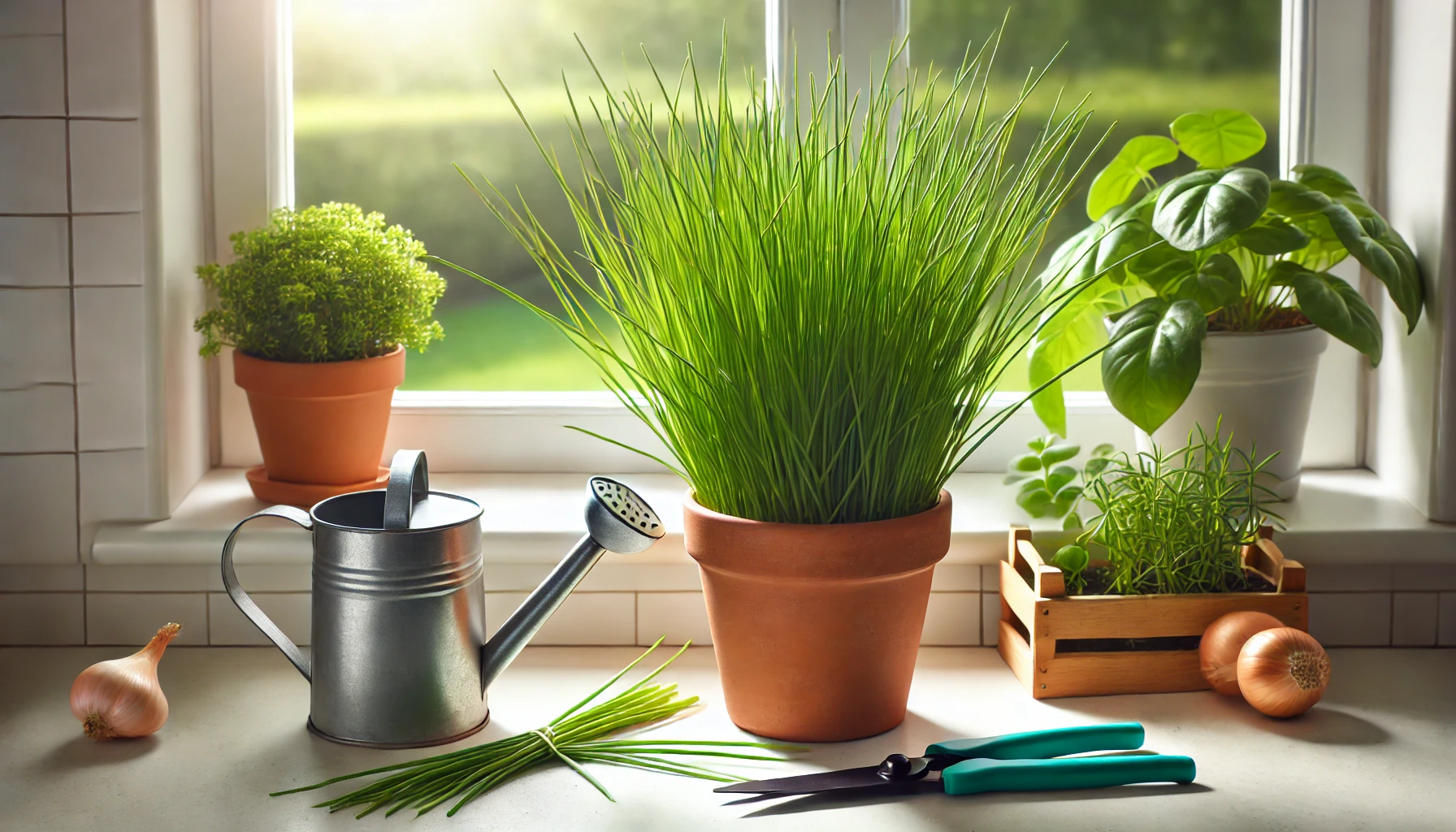Chives are one of the easiest herbs to grow indoors, requiring minimal space and care. Their mild onion-like flavor makes them a versatile addition to many dishes, while their vibrant green leaves add beauty to your indoor garden. This guide will take you through everything you need to know about growing and maintaining chives indoors.
1. Why Grow Chives Indoors?
- Year-round harvest – Enjoy fresh chives no matter the season.
- Low-maintenance – Requires little care and grows well in small spaces.
- Fast-growing – Produces leaves quickly and regrows after cutting.
- Nutrient-rich – A great source of vitamins A, C, and K.
2. Choosing the Right Type of Chives
There are two main types of chives:
- Common Chives (Allium schoenoprasum) – Thin, tubular leaves with a mild onion flavor.
- Garlic Chives (Allium tuberosum) – Flat, broader leaves with a slight garlic taste.
For indoor growing, common chives are the best option due to their compact growth and continuous regrowth after harvesting.
3. Selecting the Right Pot and Soil
Choosing the Best Pot
- Use a 6–8 inch container with drainage holes to prevent root rot.
- A wide, shallow pot works well since chives have a shallow root system.
Best Soil for Chives
- Use a light, well-draining potting mix rich in organic matter.
- Add perlite or sand to improve aeration and drainage.
- Avoid heavy, compacted soils, as chives prefer loose, airy soil.
4. Providing the Right Light Conditions
Chives grow best with plenty of light.
- Place the pot in a south- or east-facing window where it gets 6–8 hours of direct sunlight daily.
- If natural light is insufficient, supplement with a full-spectrum LED grow light for at least 10–12 hours per day.
- Rotate the pot every few days to ensure even light exposure.
5. Watering and Humidity Needs
Chives prefer consistently moist but not soggy soil.
- Water when the top inch of soil feels dry.
- Use the “soak and dry” method – water deeply, then let excess moisture drain.
- Avoid overwatering, as chives are susceptible to root rot.
- Chives tolerate moderate humidity and do not require misting.
6. Temperature and Air Circulation
Chives thrive in stable indoor temperatures.
- Keep the temperature between 60–75°F (16–24°C).
- Avoid placing the plant near cold drafts, heaters, or air conditioning vents.
- Good air circulation helps prevent fungal diseases.
7. Fertilizing for Healthy Growth
Chives benefit from occasional feeding.
- Use a diluted liquid fertilizer (such as fish emulsion or compost tea) once every 4–6 weeks.
- Avoid over-fertilizing, as excessive nutrients can lead to weak, leggy growth.
8. Pruning and Harvesting Chives
Regular trimming encourages regrowth and prevents the plant from becoming too tall.
How to Prune Chives for Best Growth
- Once the plant reaches 6 inches tall, start trimming the leaves.
- Cut at the base, about 1 inch above the soil, to encourage new growth.
- Remove any yellowing or dead leaves to keep the plant healthy.
Harvesting Chives for Cooking
- Use scissors to snip fresh leaves as needed.
- For the best flavor, harvest in the morning when the oils are most concentrated.
- Store fresh chives in the fridge or freeze them for long-term use.
9. Common Problems and How to Fix Them
1. Yellowing Leaves
Cause: Overwatering or poor drainage.
Solution: Let the soil dry between waterings and ensure proper drainage.
2. Leggy Growth
Cause: Not enough sunlight.
Solution: Move to a sunnier location or use a grow light.
3. Slow Growth or Wilting
Cause: Nutrient deficiency or overcrowded roots.
Solution: Apply a diluted fertilizer or repot into a larger container.
10. Propagating Chives for More Plants
Chives can be propagated by seeds or division.
How to Grow Chives from Seeds
- Sprinkle seeds over moist soil and lightly press them in.
- Keep the soil slightly damp until seedlings appear (7–14 days).
- Thin seedlings so they have 2–3 inches of space between them.
How to Propagate by Division
- Carefully remove the plant from its pot.
- Separate the root system into sections, ensuring each has shoots and roots.
- Replant each section in a separate pot with fresh soil.
11. Companion Plants for Chives
Chives pair well with other herbs:
- Basil – Similar light and watering needs.
- Parsley – Thrives alongside chives.
- Thyme – A great companion for shared containers.
Avoid planting chives near beans or peas, as they may inhibit their growth.
12. Using Fresh and Dried Chives
Chives are a versatile herb with many uses:
- Cooking – Adds fresh flavor to soups, eggs, and potato dishes.
- Garnishing – A classic topping for salads and dips.
- Herbal Teas – Used for digestion and immune support.
Final Thoughts
Growing chives indoors is simple and rewarding, providing fresh leaves for cooking, garnishing, and herbal remedies. By following these care tips, you’ll have a thriving chive plant ready to enhance your home and kitchen.

